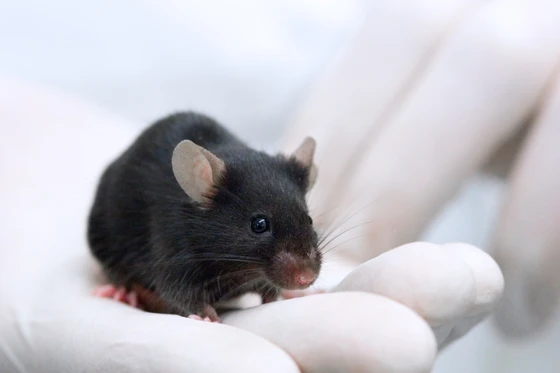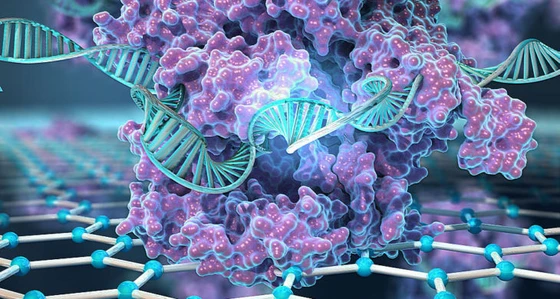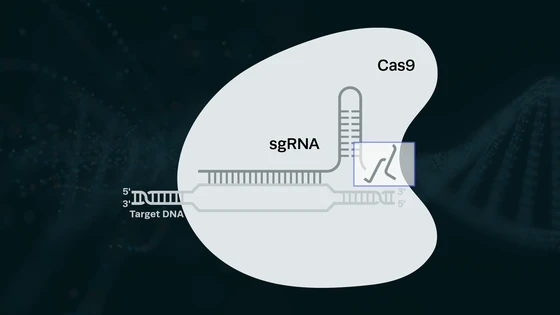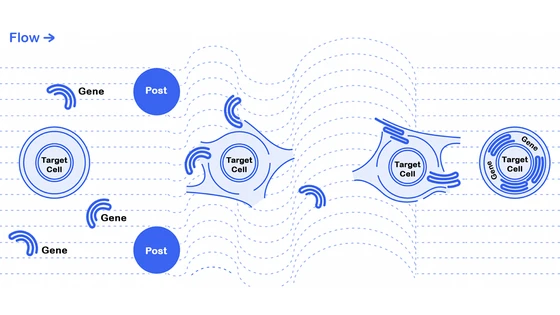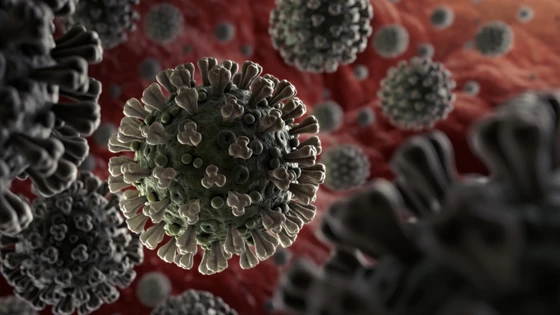The CRISPR field is moving fast! Don’t worry, we’ve got you covered. Check in every week for a quick summary of the biggest news and developments in genome engineering research so you can stay up to date with what’s happening in the world of CRISPR.
This week, we cover news from this year’s annual Society for Neuroscience conference that took place in San Diego earlier this week. Dr. Noriyuki Kishi presented his research using marmoset monkeys to model for Rett syndrome, a rare neurological disorder.
Next, we talk you through a new study that delves into an inherited form of the neurodegenerative condition, amyotrophic lateral sclerosis (ALS). Researchers have used CRISPR-Cas9 to repair mutations to the FUS gene in mice. FUS is crucial to genetic stability, so this news provides an exciting foundation for future work that aims to target therapeutics at the FUS gene to prevent or slow ALS progression.
Lastly, we have an update on the latest CRISPR foods you might expect to find at your local grocery store. A new research protocol was published recently that details the method for editing the genome of apple and grape plants using CRISPR technology.
CRISPR Engineered Marmoset Monkeys As Rett Syndrome Models

Rett syndrome is a rare neurological disorder that affects more females than males. In the majority of cases, boys with Rett syndrome die before birth or as young children, whereas girls tend to live until their mid-40s, living with motor problems, signs of autism, seizures, and intellectual difficulties. The syndrome is present from conception, and usually remains undetected until a child starts to exhibit signs of skill regression, usually around the age of one. Children begin to lose gained skills and show problems with language, coordination, and repetitive movements.
Current estimates suggest that the condition occurs in around 1 in 23,000 live births. In more than 99% of people with Rett syndrome, there is no history of the disorder in their family. Incidences are largely due to mutations in the MECP2 gene, which has been found to be essential for the normal function of mature nerve cells, where the protein is present in high levels.
Much of the research that has been done to further our understanding of Rett syndrome has relied on rats and mice to model the disease. In more recent years, marmoset monkeys have been tested as models, but without much success.
A research team led by Dr. Noriyuki Kishi from the University of Keio, Minato, Japan has used CRISPR technology to generate two marmoset monkeys without the MECP2 gene, which mimics the MECP2 loss of function mutations in human patients suffering from this disease. Dr. Kishi presented the team’s work at the 2018 Society for Neuroscience annual meeting in San Diego this week.
The two CRISPR marmosets were both live births, but the male died at 3 months of age, and the female at 5 months. The causes of death have not yet been formally determined, but Dr. Kishi believes that “the complete loss of the MECP2 leads to the death”. Brain scans taken at various time points before the marmosets died showed that the brains of monkeys with mutated MECP2 genes using CRISPR were roughly the same size as wild type monkeys until they were 2 months old, but brain size in the mutant marmosets was significantly smaller when tested again at 3 months.
Future research is planned to assess whether specific drugs may be able to extend the lifespan of these engineered marmosets in the hope of developing treatments for humans with this condition.
CRISPR Genome Editing May Reveal the Genetic Cause of ALS

Amyotrophic lateral sclerosis (ALS) is a neurological disorder that causes the death of nerve cells within muscles. The disease is progressive, meaning that symptoms such as loss of muscular control get worse over time, ultimately resulting in the death of patients due to their inability to chew, walk, and talk. The famous scientist Stephen Hawking lived with ALS until the age of 76, but the life expectancy of a person with ALS averages at between 2 and 5 years from the time diagnosis.
An estimated 10% of ALS cases are hereditary. New research by Haibo Wang et al. at the Houston Methodist Research Institute in Texas and the Center for Brain and Disease Research in Leuven, Belgium, suggests that one of the genes linked to ALS could be targeted in order to prevent or slow down disease progression. The team focused on the FUS gene product that regulates protein transcription and plays a role in ensuring we have a full set of functional genes. Whether mutations in the FUS gene are the cause of ALS has so far not been proven; there has been a correlation, but no proven causation.
Wang’s team aimed to change that. They used CRISPR-Cas9 technology to repair mutations to the FUS gene in mice, and the resulting animals showed a reduced number of breaks to the DNA strand. The team hopes that this research represents the discovery of a new pathway by which DNA is damaged in ALS, and therefore a new pathway that can be therapeutically targeted to slow down or prevent disease progression.
New CRISPR Editing Protocol Enables Editing of Apples and Grapes

CRISPR has already been used to boost the flavor and nutrition of tomatoes and increase the protein content of pasta. The next crops in the CRISPR-Cas9 grocery store appear to be apples and grapes.
Researchers at Tokushima University, the NARO Institute of Fruit Tree and Tea Science, and Iwate University – all in Japan, along with researchers at the Chinese Academy of Sciences and the Italian Institute of Technology, have developed and refined a protocol to allow the CRISPR-Cas9 technology to be used in both apples and grapes.
The team used plasmid-mediated genome editing and direct delivery of CRISPR-Cas9 ribonucleoproteins to achieve efficient DNA-free targeted mutations within the protoplasts of the fruits. They noted that direct delivery of CRISPR-Cas9 RNPs took between 2 and 3 weeks, whereas the plasmid-mediated protocol took more than 3 months to regenerate plants. These new protocols will help researchers easily modify traits of not just apples and grapes, but also of other important agricultural crops that are consumed worldwide.
CRISPR 101 eBook
CRISPR has quickly become a standard laboratory tool for gene editing. As the adoption of CRISPR accelerates worldwide, up-to-date knowledge of the basics of CRISPR is essential for anyone in the field. From target identification studies to the recent breakthroughs in clinical trials, CRISPR is enabling scientists to unlock the power of the genome.
Download our CRISPR 101 eBook today to stay up to date on all your CRISPR basics and get the best results in your CRISPR experiments!


